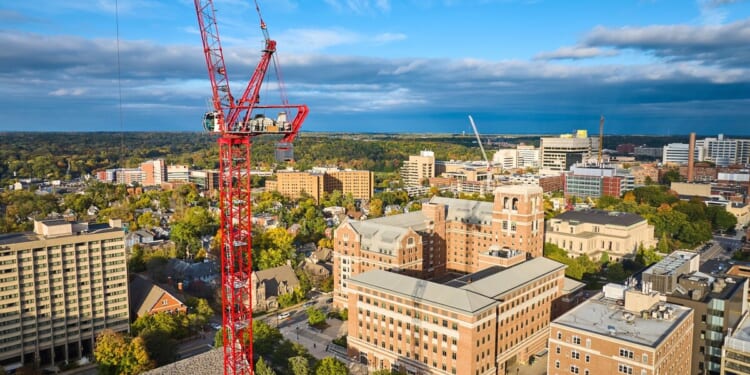Why is it so much more expensive to build things than it used to be? Dollars get you less than they used to, but inflation doesn’t fully explain why building the Mackinac Bridge cost about $1 billion dollars in today’s money, while the I-75 modernization project is already above$1.4 billion. Or why the Golden Gate Bridge cost $35 million ($800 million today) in 1933, while the safety net alone installed under the bridge in 2017 cost $224 million.
The great economist Thomas Sowell wrote, “If there is any lesson in the history of ideas, it is that good intentions tell you nothing about the actual consequences. But [those] who generate ideas don’t have to pay the consequences.”
The new book “Abundance” by Ezra Klein and Derek Thompson is, at its core, about how good intentions can lead to bad outcomes. It has sparked a conversation on the left about the conflict between building and creating things versus pay-offs to special interest groups. The building of housing, transit and energy conflict with the factions that often support the Democratic party. This has driven up costs while severely limiting economic and population growth in left-leaning states.
You see this in all sorts of big policy battles.
Transit: It costs around ten times as much, per mile, to expand trains in New York City as it does in other comparable cities around the world. The California high-speed rail project is a disaster — exploding ten-fold in cost all while the actual expected service keeps shrinking. Transit costs almost everywhere have exploded while service and ridership have worsened. The blame largely rests with unions and environmentalists who insist on expensive and time-consuming contract mandates. Running the trains is also more expensive because unions bargain and advocate for putting more (unionized) employees on board than are needed for safety.
Housing: Michigan lawmakers say the solution to the housing crunch is to shell out $200,000 to $300,000 per apartment unit to builders, developers and non-profits. When Michigan was a low-cost housing state, builders just built to meet demand. Today, zoning rules imposed by local governments make it difficult, expensive or impossible to meet housing demand. Local governments fight to keep absurd zoning rules in place and want lawmakers to keep shipping them more tax subsidies instead of working to reduce costs.
Energy: Environmental groups fight to shut down coal, oil, gas and nuclear energy production to replace them with more expensive and less reliable wind turbines and solar panels. That alone drives up costs. But even when developers want to build new clean energy sources of power, environmentalists fight for regulations far beyond what is required elsewhere in the world. This delays and makes projects much more expensive.
Broadband internet: The nation’s most ambitious plan to build out internet was passed four years ago but has currently laid zero feet of wire. Why? Because the Biden administration — at the behest of lawyers, unions and environmentalists — tried to use administrative power to force states to hire union labor and go through extensive environmental reviews. (The Trump Administration has largely thrown out those rules).
The debate in “Abundance” isn’t new and it isn’t partisan. Before Thomson and Klein’s book, there was “Dream Hoarders,” and “Bottleneckers.”
“Dream Hoarders” is about how upper-middle-class Americans are increasingly “opportunity hoarders” — many gain wealth and then support policies that pull up the ladder behind them. They bought an affordable house but now support zoning laws that restrict new housing. They have kids in good schools but support policies limiting better education for others.
“Bottleneckers” covers how different groups to use the government to benefit themselves. Doctors, lawyers, barbers, electricians and other licensed industries navigate the hoops needed to work and then use their associations to advocate for higher barriers to keep their competitors out. Taxi cab companies fight to block Uber and Lyft. Alcohol distributors fight for monopoly distribution rules.
In the end, these are policies of naked favoritism which end up becoming a sop to the rich(er) rather than benefiting everyone. By ignoring objective criteria for whether the rules will enhance public health and safety or meet any type of cost-benefit analysis, lawmakers simply use government policy to benefit the few at the expense of the many.










